-
Car Reviews
- All reviews
- Midsize SUVs
- Small cars
- Utes
- Small SUVs
- Large SUVs
- Large cars
- Sports SUVs
- Sports cars
- Vans
Latest reviews
- Car News
-
Car Comparisons
Latest comparisons
- Chasing Deals
The RX500h is the first Lexus fitted with both a turbocharger and a hybrid system. The combination works so well that you have to wonder why it wasn’t done sooner
Lexus has built turbocharged cars and it’s built hybrid-electric cars, but until this vehicle – next year’s 2023 Lexus RX500h SUV – it has never done a turbocharged hybrid. The match works so well so well that it has you immediately wondering what took so long.
There’s an answer to that question, and it’s that the hybrid system Lexus and Toyota have shared for over a decade – based around a number of motor-generators working in unison – was already sizeable, dimensionally, without adding a bulky turbo and intercooler to the mix.
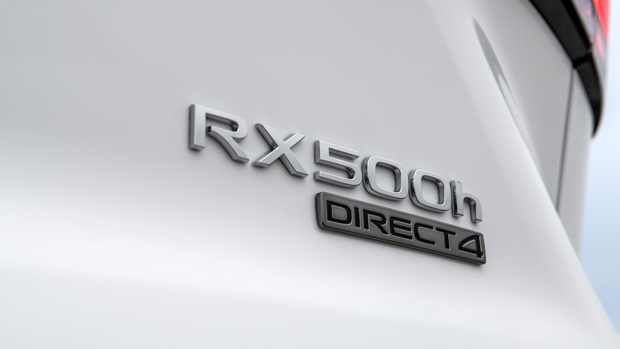
So for the turbo-hybrid RX500h, Lexus went back to the drawing board. The hybrid system used in this segment-straddling, medium-to-large luxury SUV has nothing to do with the more familiar naturally-aspirated hybrid set to be used in the mainstream RX350h.
The girthy 273kW turbo-hybrid uses a dual-motor setup and direct-drive six-speed automatic in place of triple motor-generators acting as an eCVT. While the existing hybrid is pragmatic and works well enough – and will continue to do so in the efficient garden-variety RX350h models – the RX500h takes both refinement and electric boost to the next level.
Quite apart from the muscular, turbocharged 2.4-litre petrol four-cylinder engine, the enormous difference here is in the gearbox. Unlike the RX350h, this is a true transmission here, if not a torque converter: instead, the motors directly change mechanical gears – six of them all up. That number isn’t greater because there’s simply so much torque (about 551Nm combined) that Lexus felt more did not equal better. Six gears is correct.
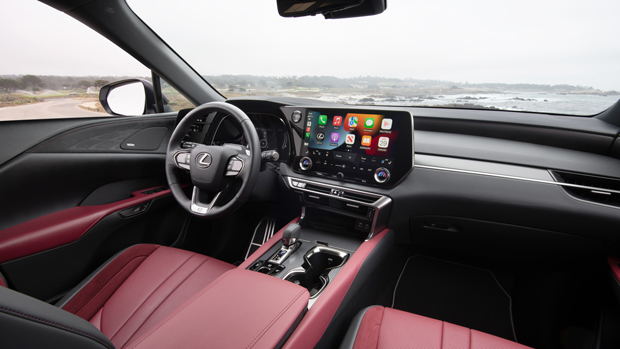
Like the RX350h, the RX500h’s all-wheel drive system is electric rather than a function of a physical driveshaft from the engine. The difference is that the turbo-hybrid’s discrete rear motor is much larger and more powerful, capable of delivering and recouping considerably more energy. This is used to dispatch rapid launches in the vicinity of 5-6sec, but it is also used to aggressively and independently regenerate energy while braking to keep the RX from standing on its nose.
All of this is impressive – but we expect Lexus to be at the forefront of hybrid technology, consistently moving the petrol-electric game forward, at least until the brand shifts its portfolio entirely to electric models in the 2030s.
What we don’t expect, and thus were more than pleasantly surprised by, was for Lexus to be pushing ride-handling benchmarks along. There have been hints of a changing culture of vehicle dynamics at Toyota and Lexus over the last decade – car fans know big-boss Akio Toyota’s “no more boring cars” edict by heart now – but the luxury arm’s most traditional products, like the RX, haven’t showed much evidence of having been caught by this mantra.
Until now, that is.
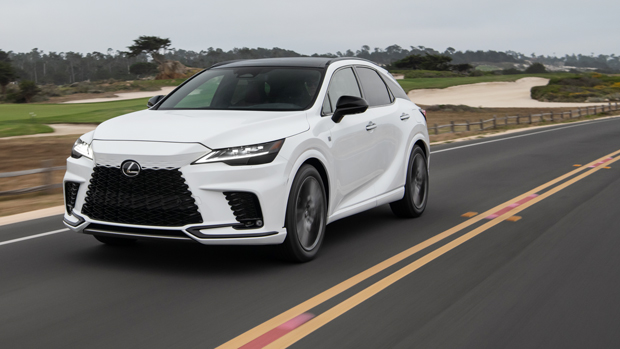
Echoing a similar change for the smaller, second-generation Lexus NX midsize SUV that was released in Australia in late 2021, the new fifth-gen RX has been transposed to the conglomerate’s lighter, stiffer GA-K midsize transverse vehicle platform.
This decision, combined with deft tuning of the suspension across all RX powertrains and grades, has worked wonders, transforming the RX from near the bottom of the large-luxury pack on a ride/handling perspective to the top third, at least.
Most RX grades continue to sport Lexus’s adaptive variable suspension (AVS) system that reads damper inputs constantly, adjusting firmness within given comfort and sport ranges as it works, and the generally supple and sensible demeanour of the shock absorbers continue here.
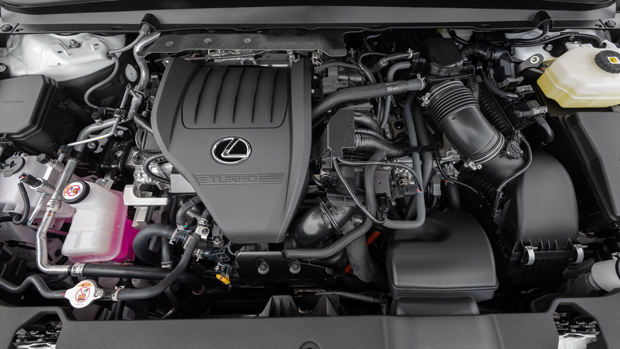
It’s the body control that is chalk-and-cheese, with the new RX completely ending the pitching, heaving and wobbling characteristics of the elderly-feeling fourth-generation model, replacing them with an always calm, highly confident posture that felt right at home on a series of California back-roads that appeared to be doing their best to imitate regional New South Wales, down to pocked surfacing and oddly-cambered corners.
Despite riding on relatively large 20- or 21-inch wheels, the RX models we tested, including the RX500h, remained comfortable and composed. If there are handling weak spots, they are to be found in the relatively mute (but accurate) steering and the mid-range Bridgestone Alenza tyres, which should probably be swapped for more aggressive rubber in RX500h guise given the power and potential of the vehicle.
The RX’s enormous handling jump on launch augurs very well for the luxury SUV’s chances in the Australian market, where well-heeled family busses like the RX are required to be capable of long-distance trips to holiday houses or the snow in actual comfort – meaning, not just a soft suspension but a controlled body that staves off car-sickness and fatigue.
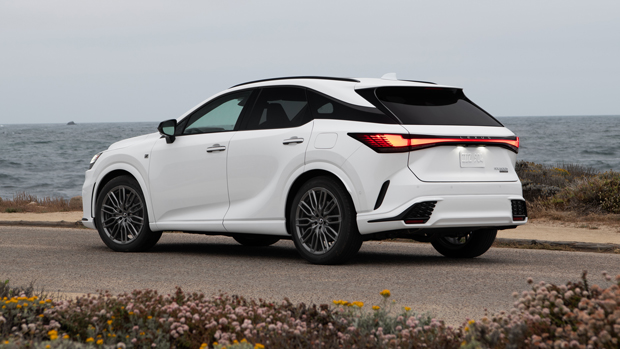
Among the three RX powertrains coming to Australia, the RX500h is arguably the best candidate for this job. Revisions to the trim grade structure mean this is a top-spec RX not just in the engine department but also in spec, being the second Lexus to pick up “F Sport Performance” variant badging (alongside the not-for-Australia, V8-powered IS500).
Being an F Sport Performance means the RX500h gains additional chassis bracing that further dial out unwanted body movements but, shockingly, not at the expense of unwanted noise/vibration/harshness issues – partially because the front brace has its own shock absorber to prevent this effect.
If our Californian experience is echoed upon the RX’s Australian release in the first quarter of 2023, the RX500h will join a remarkably short list of luxury SUVs that manage to deliver an actually-appropriate blend of body control and ride comfort – a list currently defined by a narrow set of BMW models with optional adaptive dampers or Volvo SUVs on optional air suspension. On the Lexus, the right suspension tech will be standard.
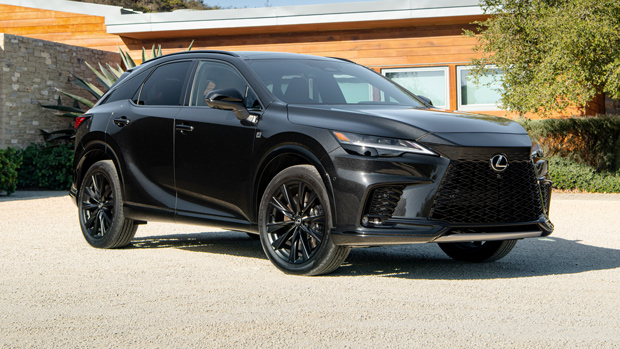
We spent a little less time in the 205kW RX350, which uses the RX500h’s 2.4-litre turbocharged petrol four-cylinder but without the electric motors, or the RX350h, which picks up the NX350h’s older-school naturally-aspirated Lexus hybrid system to make 180kW of power. But all engines are serviceable and feel quick enough on the move, with the main differentiator being economy.
With its 270kW/551Nm outputs, the RX500h is as focussed on accessible performance as it is on fuel economy, so perhaps our on-launch result of 10L/100km shouldn’t surprise – and it may do considerably better in suburban driving, which our first impressions had precisely zero of. At least it’s a better result than the non-hybrid turbo RX350, which delivered just 13L/100km.
No surprise, though, that the economy superstar of the range is the RX350h, which even on a punishing and quick launch loop managed 8.5L/100km – so expect this car to dip into the sevens or even the high sixes on slower roads back in Australia. But the atmo-hybrid RX350h is much noisier in the cabin under full acceleration, missing the quiet muscularity of the turbo engines.
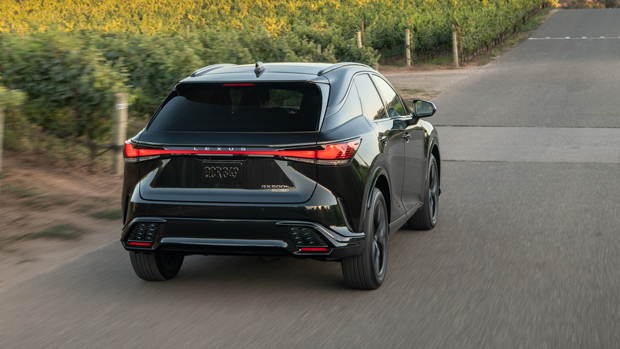
The more modest hybrid also persists with its e-CVT, so revs remain sky-high at full throttle rather than combing subtly through gears, as in the turbos, which have eight speeds (non-hybrid) or six (RX500h).
Inside, a further step change has taken place for the fifth-gen RX, with the incoming large SUV almost identically mirroring the smaller second-gen NX. It’s a cabin that no longer tugs the forelock at tradition in the same way as the old car – traditionalists may miss the analogue clock, which has been removed. Like the silky but thirsty old V6, the clock’s a casualty of the times.
Instead, you’ll find newer, bigger screens: a relatively small and modestly-equipped driver display that can display audio and trip info but not a full map, and then a large canvas measuring 14.9-inches in the centre of the dash. There is a nine-inch version on low-end cars in America – maybe the very entry-level RX in Australia will make do with this.
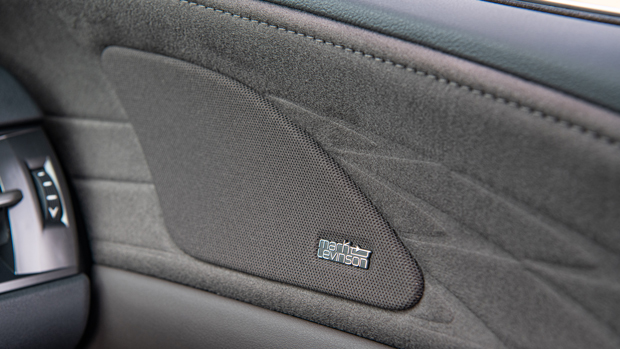
The central screen runs the latest Lexus operating system, which is based around large, clear touch targets that work well. Plus, it scores wireless Apple CarPlay and Android Auto compatibility – tech that will also be extended to the equivalent NX via over-the-air software updates soon. And there’s, naturally, a superb Mark Levinson stereo that is standard on RX500h.
Also impressive are the seats, but particularly on the F Sport and RX500h-only F Sport Performance trims – cars with pews that have extended shoulder bolstering to really hold you in while cornering. Luxury-grade cars are a little less focussed in the chair but still comfortable – though we noted the lowest-end RX grades at the car’s US launch had only seat heaters, with seat coolers reserved for up-spec variants.
RX is now a five-seat only vehicle, but the wheelbase is longer – and the vehicle is wider. This partially explains the improved dynamics but also the more flexible second row, which accommodates adults easily and in comfort, with a supportive seat base, air vents, and USB ports.
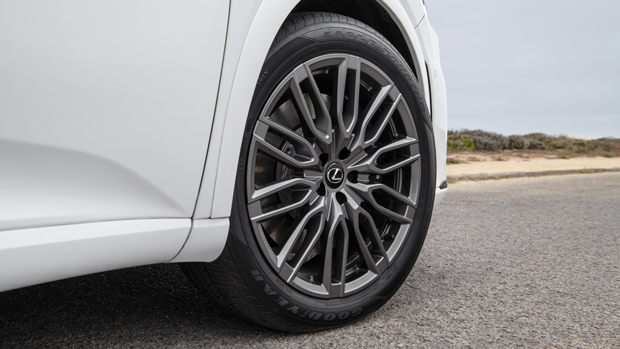
If you want a seven-seat Lexus SUV that isn’t based on a Toyota Land Cruiser, like the brand’s lushly rugged LX, we know the brand is working on an option – possibly called the TX, which you can read about here. The RX retains its signature large boot, with specific volume still to be determined, but it is likely to fall into a 500-650-litre range.
Specifications, prices and ownership costs are still being determined for the incoming Australian RX range, which will is due for launch between January and March next year. We expect to see more detail on the line-up by summer, and we may know more by then about a planned release date of the RX450h+ plug-in hybrid, which will come to Australia but at an unknown time.
About Chasing cars
Chasing Cars reviews are 100% independent.
Because we are powered by Budget Direct Insurance, we don’t receive advertising or sales revenue from car manufacturers.
We’re truly independent – giving you Australia’s best car reviews.
The estimate provided does not take into account your personal circumstances but is intended to give a general indication of the cost of insurance, in order to obtain a complete quote, please visit www.budgetdirect.com.au. Estimate includes 15%^ online discount.
^Conditions Apply
Budget Direct Insurance arranged by Auto & General Services Pty Ltd ACN 003 617 909(AGS) AFSL 241 411, for and on behalf of the insurer, Auto & General Insurance Company Limited(ABN 42 111 586 353, AFSL 285 571).Because we don’t know your financial needs, we can’t advise you if this insurance will suit you. You should consider your needs and the Product Disclosure Statement before making a decision to buy insurance. Terms and conditions apply.
Indicative quote based on assumptions including postcode , 40 year old male with no offences, licence suspensions or claims in the last 5 years, a NCD Rating 1 and no younger drivers listed. White car, driven up to 10,000kms a year, unfinanced, with no modifications, factory options and/or non-standard accessories, private use only and garaged at night.
^Online Discounts Terms & Conditions
1. Discounts apply to the premium paid for a new Budget Direct Gold Comprehensive Car Insurance, Third Party Property Only or Third Party Property, Fire & Theft Insurance policy initiated online on or after 29 March 2017. Discounts do not apply to optional Roadside Assistance.
2. Discounts do not apply to any renewal offer of insurance.
3. Discounts only apply to the insurance portion of the premium. Discounts are applied before government charges, taxes, levies and fees, including instalment processing fees (as applicable). The full extent of discounts may therefore be impacted.
4. We reserve the right to change the offer without notice.